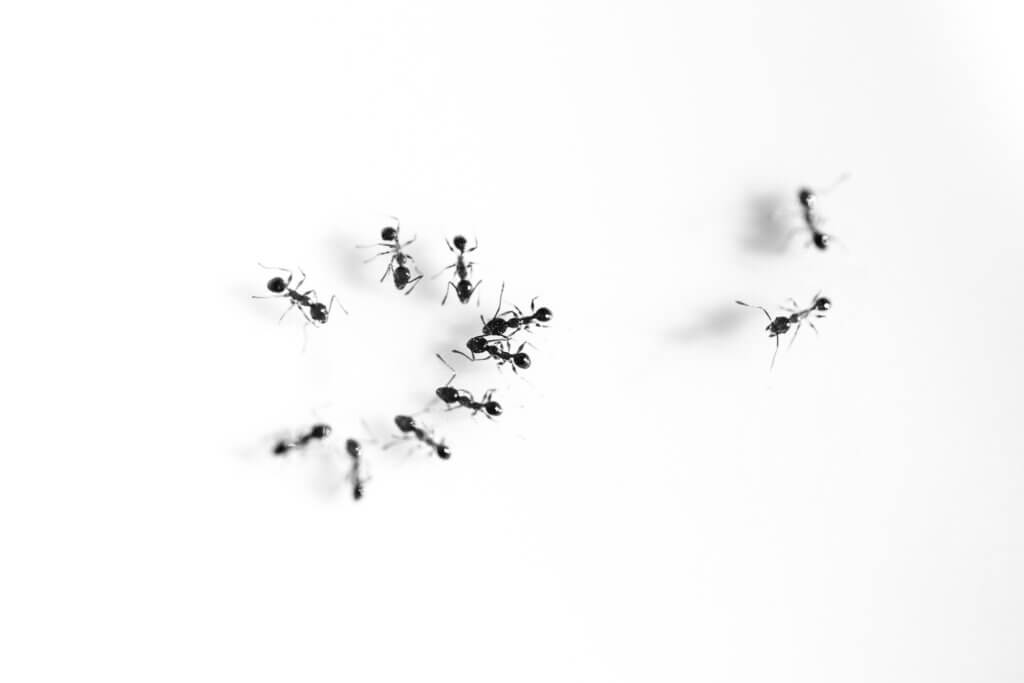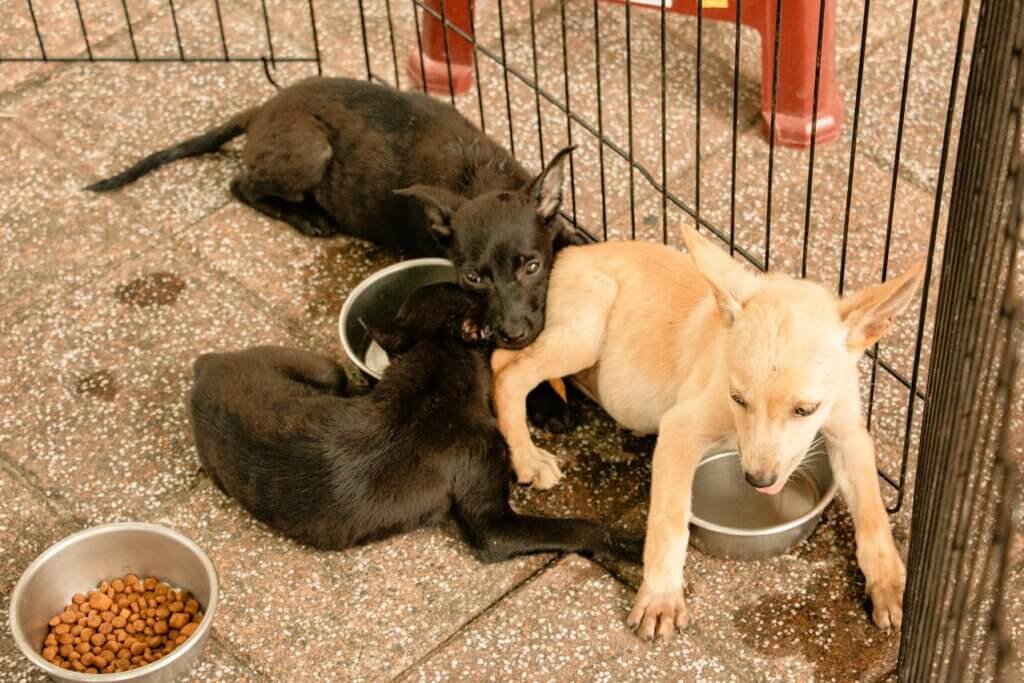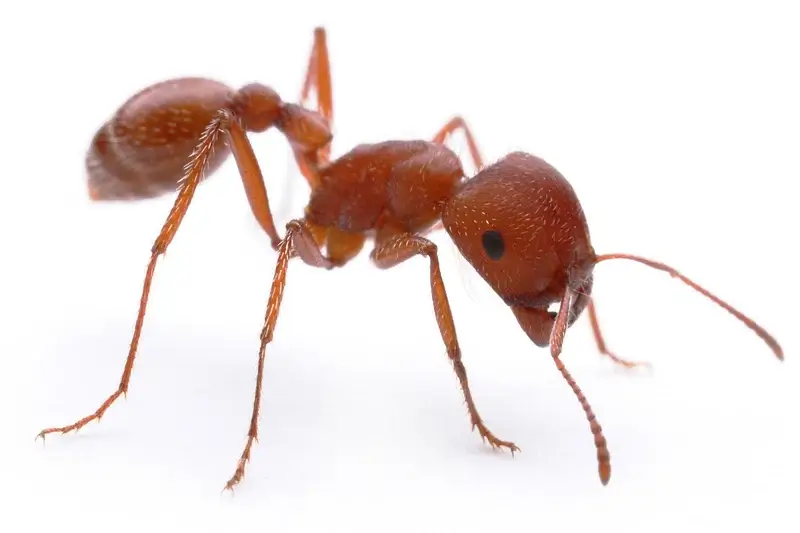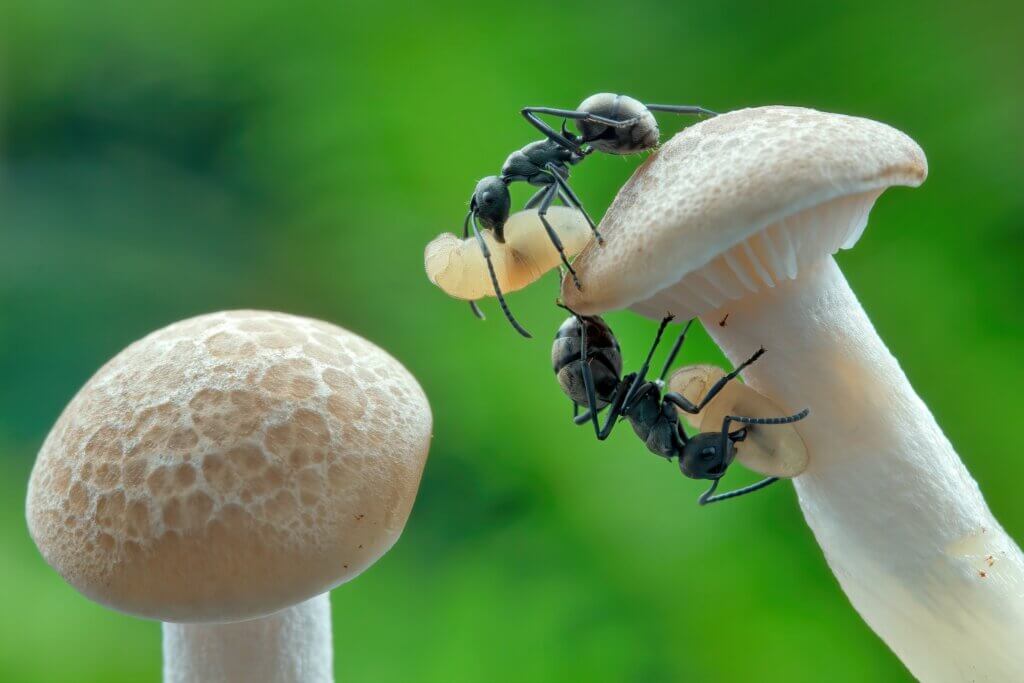How to Keep Ants Out of Dog Food
Ants invading dog food is a common problem faced by many pet owners. These tiny pests are attracted to the scent and nutritional value of dog food, and once they find a source, they can quickly become a persistent nuisance. How to keep ants out of dog food is crucial not just for maintaining hygiene but also for the health and comfort of your pet. Contaminated food can lead to health issues for dogs, and no one wants to see their furry friend uncomfortable or suffering from insect bites.
Health reasons are a significant concern; ants can carry bacteria and other pathogens that might be harmful if ingested by your pet. Additionally, ants can spoil the food, making it less appealing and potentially dangerous. Dogs might refuse to eat infested food, leading to discomfort and nutritional deficiencies.
In this guide on how to keep ants out of dog food, we will explore several strategies to prevent and address this issue. We’ll cover preventative measures, such as choosing the right location for feeding, proper storage solutions like airtight containers, and creating physical barriers using ant-proof bowls and natural repellents. We’ll also discuss specialized solutions for automatic feeders, regular maintenance and cleanliness, and what to do if ants have already infested the food. By following these tips on how to keep ants out of dog food, you can ensure your dog’s food remains safe and ant-free.4o
Understanding the Problem

Why Are Ants Attracted to Dog Food?
Ants are naturally drawn to food sources that provide them with essential nutrients. Dog food is particularly attractive to ants due to its scent and nutritional value, making it a frequent target for these tiny invaders.
Explain the Attraction of Ants to Dog Food
- Scent: Dog food emits a strong aroma that ants can detect from a considerable distance. The smell of fats, proteins, and sugars in dog food is irresistible to ants.
- Easy Access: Ants are small and can easily find their way into improperly sealed containers or bags of dog food. Even the tiniest crumbs or spills can attract a whole colony.
- Nutritional Value: Dog food is rich in proteins, fats, and carbohydrates, making it an excellent food source for ants. They seek out these nutrients to sustain their colonies.
Common Signs of Ant Infestation in Dog Food
- Visible Ant Trails: Among the initial indications of an ant problem is the sight of ants forming a trail to and from the dog food. These trails are often seen along floors, walls, and countertops leading to the food source.
- Ants in the Food: If you notice ants crawling inside the dog food container or mixed in with the food itself, it’s a clear indication of an infestation.
- Increased Ant Activity: You may observe a sudden increase in the number of ants around your home, especially near the area where you store or serve dog food.
Understanding why ants are attracted to dog food and identifying the symptoms of an infestation are the initial actions in addressing the problem. By knowing what draws ants and how to spot their presence, you can take effective measures on how to keep ants out of dog food. Implementing proper storage solutions and regular maintenance can help keep your dog’s food ant-free, ensuring it remains safe and healthy for your pet.
Preventative Measures to Keep Ants Out of Dog Food
Choosing the Right Location

Proper placement of your dog’s food can make a significant difference in preventing ant infestations. Here are some tips on how to keep ants out of dog food by choosing the right location:
Indoor Placement
- Store dog food somewhere cool and dry: Ants are less likely to invade if the food is stored in a location that is cool and dry. Moisture attracts ants, so avoid damp areas.
- Avoid Feeding Areas Near Windows or Doors: These are common entry points for ants. Keeping dog food away from windows and doors can help reduce the likelihood of ants finding their way to the food.
Outdoor Placement
- Use Elevated Feeding Stations: When feeding your dog outside, use elevated feeding stations. This makes it more difficult for ants to reach the food. Elevated bowls or platforms can be very effective.
- Keep the Feeding Area Clean and Free from Spills: Regularly clean the area where your dog eats. Spilled food and crumbs attract ants quickly, so prompt cleaning can prevent this. Make sure to remove any leftover food immediately after your dog has finished eating.
By carefully choosing where you place your dog’s food, both indoors and outdoors, you can significantly reduce the chances of an ant infestation. Implementing these simple measures on how to keep ants out of dog food will help ensure that your pet’s food remains safe and ant-free.
Proper Storage Solutions
Proper storage is key to preventing ant infestations. Here are some effective storage solutions on how to keep ants out of dog food:
Airtight Containers
- Importance of Airtight Containers to Keep Ants Out: Storing dog food in airtight containers is one of the best ways to prevent ants from accessing it. These containers seal tightly, preventing ants from detecting the scent and gaining entry.
- Recommend Types of Containers:
- Plastic: Durable and lightweight, plastic containers with secure lids are convenient for everyday use.
- Glass: Glass containers are heavier and less prone to odors, making them a great option for long-term storage.
- Metal: Metal containers are robust and often come with tightly sealed lids, providing excellent protection against ants.
Sealed Bags and Bins
- Use Resealable Plastic Bags for Portioning Food: Portioning dog food into resealable plastic bags can help keep it fresh and reduce the risk of contamination. These bags can then be placed inside larger storage bins.
- Store Bags in Sturdy, Ant-Proof Bins: Placing resealable bags or original dog food bags into sturdy, ant-proof bins adds an extra layer of protection. Seek receptacles with tightly fitting lids to guarantee that ants cannot get inside.
By using airtight containers, sealed bags, and bins, you can effectively implement strategies to keep ants out of dog food. These storage solutions help maintain the food’s freshness while ensuring it remains safe from ant infestations.
Creating Physical Barriers
Building physical barriers is a useful strategy to keep ants away from reaching your dog’s food. Here are some methods on how to keep ants out of dog food by making a dog food bowl ant-proof:
Using Bowls with Built-In Moats
- Explain How Moats Prevent Ants from Reaching the Food: Bowls with built-in moats have a small water-filled trench around the base. Ants cannot cross the water, so they are unable to reach the food inside the bowl. This simple yet effective barrier keeps the food safe from ants.
- Provide Examples of Such Products Available in the Market: There are several products available designed to keep ants away from pet food. For example, the “Ant Proof Pet Bowl” and the “BugSnub Ant Proof Pet Food Bowl” are popular choices. These bowls are specifically designed with moats to keep ants out of dog food.
Will Vaseline Keep Ants Away?
- How to Apply Vaseline Around the Base of the Bowl to Deter Ants: Another method to create a physical barrier is to apply a thin layer of Vaseline around the base of the dog food bowl. Ants find it difficult to cross the sticky surface, thus preventing them from reaching the food.
- Safety Considerations for Pets: When using Vaseline, ensure that it is applied only to the outer base of the bowl where your pet cannot lick it. While Vaseline is generally safe for pets, it is best to avoid any ingestion to prevent potential stomach upset.
Implementing these physical barriers can effectively teach you how to keep ants out of dog food. Bowls with built-in moats or Vaseline applied around the base of the bowl are simple and practical solutions to protect your dog’s food from ant invasions.
Natural and Safe Ant Repellents
Natural repellents are a secure and reliable method of keeping ants away from your dog’s food. Here are some methods on how to keep ants out of dog food using natural solutions:
Essential Oils
- Peppermint, Tea Tree, and Citrus Oils as Repellents: These essential oils have strong scents that ants dislike. Using a spray bottle, combine a few drops of these oils with water to create a natural ant-repellent spray.
- How to Create a DIY Spray and Apply It Safely Around the Feeding Area: To make the spray, add 10-15 drops of essential oil (peppermint, tea tree, citrus) to a cup of water. Shake well and spray it around the base of the dog food bowls, along entry points, and other areas where ants might enter. Reapply every few days or after cleaning.
Vinegar Solutions
- Using Vinegar to Clean the Feeding Area and Deter Ants: Vinegar disrupts ants’ pheromone trails, making it an effective deterrent. In a spray bottle, combine equal parts white vinegar and water.
- Mixing Ratios and Application Methods: Spray the vinegar solution around the feeding area, on countertops, and near baseboards. Focus on areas where ants are seen or have previously been spotted. Allow it to dry naturally. Reapply the solution as needed, especially after cleaning or when ant activity resumes.
Using natural repellents like essential oils and vinegar provides an eco-friendly and pet-safe approach to keeping ants away from your dog’s food. These methods on how to keep ants out of dog food are simple yet effective in maintaining a clean and ant-free environment for your pet.
Specialized Solutions
When dealing with an automatic dog feeder, it’s important to take specific measures to keep ants away from your pet’s food. Here’s how to implement specialized solutions on how to keep ants out of dog food:
- Inspecting and Sealing Entry Points in the Feeder: Regularly check the automatic feeder for cracks, gaps, or openings where ants could enter. Use silicone sealant or tape to stop ants from entering, sealing these entry points and the food inside.
- Regular Maintenance and Cleaning Tips: Clean the automatic feeder frequently to remove any spilled food or crumbs that can attract ants. Follow the manufacturer’s instructions for disassembly and cleaning to ensure thorough maintenance.
- Placing the Feeder on an Ant-Proof Stand or Surface: Elevate the automatic Feeder on an Ant-Proof Stand or surface. This makes it harder for ants to climb up and reach the feeder. Consider using ant moats or barriers around the stand legs to deter ants further.
By implementing these specialized solutions on how to keep ants out of dog food in an automatic feeder, you can effectively safeguard your pet’s food from ant infestations. Regular inspection, maintenance, and strategic placement play crucial roles in maintaining a clean and ant-free feeding environment for your dog.
Regular Maintenance and Cleanliness
Keeping the surroundings tidy is crucial to preventing ants from infesting your dog’s food. Here are some tips on how to keep ants out of dog food through regular maintenance and cleanliness:
Cleaning the Feeding Area
- Regularly Wash Dog Bowls and Feeding Mats: Wash your dog’s food and water bowls daily with soap and warm water. Use a pet-safe detergent to remove food residues and odors that can attract ants.
- Immediate Clean-Up of Food Spills: Promptly clean up any spilled food or water around the feeding area. Ants are attracted to leftover crumbs and spills, so keeping the area clean reduces their incentive to invade.
Routine Checks
- Inspect Storage Areas and Feeding Zones for Ant Activity: Regularly inspect the storage containers where you keep your dog’s food. Look for signs of ants, such as trails or insects near the containers.
- Replace and Clean Storage Containers regularly. Clean and disinfect storage containers periodically to eliminate food odors and residues that attract ants. Replace damaged containers that may allow ants to enter.
Adhering to these practices for keeping ants out of dog food can create a less hospitable environment for ants and ensure your pet’s food remains safe and free from infestation. Consistent cleaning and vigilant monitoring are key to maintaining a pest-free feeding area for your dog.
Addressing Infestations
Dealing with an ant infestation in your dog’s food requires prompt action to ensure your pet’s health and safety. Here’s how to address infestations and prevent future occurrences: how to keep ants out of dog food:
What to Do If Ants Have Already Infested Dog Food
- Safe Disposal Methods for Infested Food: If you discover ants in your dog’s food, it’s crucial to dispose of the contaminated food safely. Seal the infested food, place it in a Place it in a garbage bag and discard it outdoors garbage can to prevent the further spread of ants indoors.
- Preventive Steps to Avoid Future Infestations: After disposing of infested food, thoroughly clean and sanitize the feeding area. Implement preventive measures such as using ant-proof containers, regular cleaning, and applying natural repellents to deter ants from returning.
Deep Cleaning
- Steps to Thoroughly Clean and Disinfect the Feeding Area: Clean the feeding area with a solution of water and vinegar to remove ant trails and scent markers. Disinfect surfaces with pet-safe disinfectants to eliminate lingering odors that attract ants.
- Using Ant Bait Traps Strategically (Keeping Them Away from Pets): Place ant bait traps near but not in the feeding area. Ant baits lure ants to ingest poison, which they then carry back to their colony. Ensure traps are pet-safe and placed where pets cannot access them.
By following these steps on how to keep ants out of dog food and addressing infestations promptly, you can effectively manage and prevent ant problems in your pet’s feeding area. Regular monitoring and proactive measures will help maintain a clean and pest-free environment for your dog’s food.
Safety Considerations
When it comes to how to keep ants out of dog food, understanding the potential risks ants pose to your pet’s health is important. Here are some key points to consider:
Are Ants Harmful to Dogs If Eaten?
- Potential Health Risks of Dogs Eating Ants: While ants themselves are not typically harmful to dogs in small quantities, consuming large numbers of ants or ant baits can cause gastrointestinal upset. Some ants may also bite, leading to discomfort or allergic reactions in sensitive pets.
- Signs to Watch For and When to Consult a Vet: Monitor your dog for signs such as vomiting, diarrhea, excessive drooling, or discomfort after consuming ants or ant-contaminated food. If your dog exhibits any peculiar signs or if you suspect it has ingested a large amount of ants or ant baits, contact your veterinarian for advice.
Understanding these safety considerations for keeping ants out of dog food ensures you can protect your pet from potential health risks associated with ant infestations. By implementing preventive measures and promptly addressing any signs of infestation or ingestion, you can maintain a secure and wholesome setting for your dog.
Conclusion
Recap:
In this guide on how to keep ants out of dog food, we’ve explored several effective strategies to ensure your pet’s food remains safe and ant-free. Here’s a summary of the key points:
- Proper Storage: Use airtight containers or sealed bags in sturdy bins to prevent ants from accessing dog food.
- Creating Physical Barriers: To deter ants, use bowls with built-in moats or apply Vaseline around the base of bowls.
- Natural Repellents: Implement natural solutions like essential oils (peppermint, tea tree, citrus) or vinegar to keep ants away.
- Specialized Solutions: Elevate automatic feeders and inspect them regularly to seal any entry points for ants.
- Regular Maintenance: To reduce ant attraction, clean the feeding area regularly, wash bowls, and immediately clean up spills.
- Addressing Infestations: Safely dispose of infested food, deep clean the area, and use ant bait traps strategically.
Final Tips:
Consistency is key to keeping ants out of dog food. Maintain regular cleaning routines and vigilantly monitor for ant activity. Always prioritize pet safety when implementing these measures. Ensure any products used are pet-safe, and keep ant baits out of reach of your dog.
By being proactive and adhering to these suggestions, you can effectively protect your dog’s food from ants, ensuring their health and well-being.
How to Keep Ants Out of Dog Food: FAQs
Why are ants all over my dog?
Ants might be attracted to your dog due to food residue, sweet smells on their fur, or because they’re exploring the dog’s scent.
Can ants make dogs sick?
Ants themselves typically won’t make dogs sick, but ingestion of large quantities of ant baits can cause gastrointestinal upset.
What smell keeps ants away?
Ants dislike strong scents like peppermint, tea tree oil, citrus, vinegar, or cinnamon.
Does salt stop the ants?
Salt can deter ants temporarily, but it’s not a long-term solution for keeping them away.
Do ants attach to dogs?
Ants may crawl on dogs out of curiosity or to access food smells, but unlike ticks or fleas, ants don’t typically attach to dogs.


